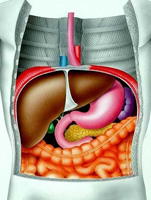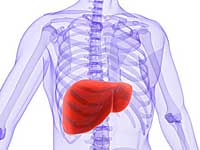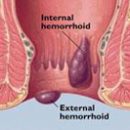The need to delivering a patient from the SBB is dictated not only to the emerging biliary colik, but also the danger of severe complications that may require urgent surgery so it is so important to detect the HCB.
Content
Litholithic therapy
The idea of dissolving the gallbladder stones by medication tools captures researchers around the world. It is attractive in that the successful use of drugs disappears the need for an operation in which there is always a risk of adverse outcome. In medical practice, the method of drug dissolution of the biliary stones appeared in the early 70s, when minodoxycholic acid was obtained, and in subsequent URSO-oxicolic acid (UDHK). Medicinal preparations of this series reduce cholesterol content in bile due to the braking of its synthesis in the liver and increase the bile pool of bile acids in bile. As a result, bile loses lithogenicity and the dissolution of the stones.
The therapeutic effect of enteral use of litholithic preparations is achieved in patients with bile stones consisting mainly of cholesterol. And, as you know, most of the accretions are mixed, containing also bilirubin, proteins and various salts. In this regard, the use of litholysis is possible only in 20% of patients suffering from HCB. The use of the method is shown by severe patients with high operating and anesthetic risk and patients who refuse operations or extracorporeal lithotripsy (ECLT). The litholysis method has a lot of contraindications to the appointment, with the abundance of which the therapeutic effect is not achieved and complications are possible.
Therapeutic effect when receiving litholitic drugs can be expected after 1.5-2 years. The daily dose of the drug UPHK is 10-15 mg / kg. The best results are observed when restricting oily food, saturated cholesterol. The main disadvantage of the method of litholysis is low efficiency. Even with strict selection of patients to dissolve stones or reduce their size, no more than 60% of them can be achieved, and this effect is achieved with small purely cholesterol stones. After the cessation of drug treatment, a high percentage of disease recurrence is marked. Insufficiently high efficiency limits the use of litholithic therapy, as an independent method of treating HCBB. It is more widely used in a complex with other methods and, in particular, with remote crushing of stones.
Extracorporeal lithotripsy
Method of non-invasive crushing of gallbladder. But not every patient can be recommended this therapeutic procedure and not in all cases a positive result is achieved. To obtain therapeutic effect, strict selection of patients need. Experience shows that the effectiveness of extracorporeal lithotripsy (ECLT) depends on the properties of the concretions that determine the success of their fragmentation and elimination, as well as on the functional state of the gallbladder, determining the frequency of the development of complications and side effects of the elimination period and early recurrence of stone formation.
The criteria for the selection of patients with cholecystolithiasis (with symptomatic and asymptomatic forms of the disease) for conducting ECLT are: single and few (2-4) Cumsions, occupying less than 1/2 volume of the gallbladder; Saved reduction and evacuation gallbladder function. The success of treatment is largely depends on the presence of calcium salts and the degree of their calcification. Good treatment results are achieved in patients with echronous and echon-vectors (not containing calcium salts) x-ray-transitable concretions, as they increase their echonight and echo absorption with signs of radiocontrase, the efficiency of crushing falls.
Contraindication to the use of ECLT are: multiple cholecystolithiasis, which occupies more than 1/2 volume of the gallbladder; calcined stones; Reducing the contractively evacuator function of the gallbladder and a disconnected gallbladder; bile ducts and biliary obstruction; the impossibility of entering enteral litholysis after crushing of the concrections (gastroduodenal ulcer, allergies); pregnancy.
On the results of lithotripsy they are judged after 3-18 months, when the gallbladder is released from fragments of stones. To accelerate the process of elimination and reduce the sizes of fragments of patients prescribed oral litholithic therapy. In the near and remote periods, the process of elimination of fragments can give complications in the form of bounces of bile colic, acute cholecystitis, obtuctive jaundice and acute pancreatitis. It should be noted that these complications arise rarely. With strict selection of patients, good treatment results (the complete release of the gallbladder from the concrections) is observed in 65-70% of patients. The unsatisfactory results of ECLT when fragments do not leave the gallbladder or, on the contrary, increase in size, are associated with an incorrect estimate of the function of the gallbladder, or with high-quality stones composition. After successfully conducted lithotripsy, a recurrence of stone formation is possible, noted in 20-23% of patients who have undergone this procedure (most of them have violations of lipid metabolism). Measure of the prevention of recurrence of the disease in this category of patients is to conduct corrective cholesterol therapy.
Inoperative methods of treatment inherent one significant lack of nonopegenetic therapy. It is not necessary to expect good treatment results when applied in the remote period, since when it is impossible to influence all the illnesses of the disease, the gall bubble is still the gall bubble. That is why the operational removal of the gallbladder is considered as a radical method of treating the HCB, eliminating the patient from bile colic and dangerous complications. Currently, there are three methods for removing the gallbladder in medical institutions: laparoscopic, surgical from minimal operational access and from standard laparotomy.
Laparoscopic cholecystectomy
 The appearance of laparoscopic cholecystectomy (LHE) method in medical practice (LHE) was a new milestone in the development of the Surgery of the HCR. For a little more than a 10-year period of existence, she won wide recognition and further improved. Endoscopic method began to produce up to 70-80% cholecystectomy.
The appearance of laparoscopic cholecystectomy (LHE) method in medical practice (LHE) was a new milestone in the development of the Surgery of the HCR. For a little more than a 10-year period of existence, she won wide recognition and further improved. Endoscopic method began to produce up to 70-80% cholecystectomy.
Indications for carrying out LHE include symptomatic uncomplicated HCB, asymptomatic flowing shape and cholesterosis of the gallbladder. Improving the technology of an endoscopic operation made it possible to expand the testimony for interference with combined lesions of bile ducts. Among the contraindications to this operation, a dense inflammatory infiltrate in the area of the gallbladder and hepatoduodenal bundles, pregnancy, transferred laparotomy, obesity, liver cirrhosis, intrahepatic location of the gallbladder, mechanical jaundice and acute pancreatitis.
Small trauma with LHE operation, gentle tool technique provide a light flow of the postoperative period, short-term finding a patient in the hospital (3-5 days) and a reduction in disability of disability (2.5-3 weeks). These factors determine the low percentage of postoperative complications from the operating room, abdominal cavity and cardiovary pulmonary system.
Along with the indisputable advantages, the LHE operation is in itself the danger of developing serious complications: bleeding into the abdominal cavity, intersection of choledoch, injury of internal organs, bile in abdominal cavity, purulent processes in intervention zones. The reasons for their occurrence are most often the adhesion and inflammatory process in the hepatoduodenal zone.
Cholecystectomy from mini-lapared access
This method of cholecystectomy operation consists of open small operational access with elements of endosurgery. The operation is carried out with the help of a set of tools, which includes an annular wicker, hinged retractors-mirrors (changing their geometry), lighting and electrocoagulators.
The use of mini-laparotomic access at cholecystectomy is suitable in cases where there are contraindications to laparoscopic intervention. The technology of this operation allows the removal of the gallbladder in the presence of inflammatory infiltration and adhesive process in the zone of the hepatoduodenal ligament; at previously suffered laparotomy when you can expect the moods of the abdominal organs with the abdominal wall; in obesity and intrahepsed gallbladder location. Mini-access is preferred in patients with accompanying diseases of cardiac and pulmonary systems.
Cholecystectomy from open laparotomy access
Removal of the gallbladder from standard wide laparotomic access refers to the category of traumatic interventions with increased risk of complications. Despite this lack of broad laparotomy, the need for its use remains with the complicated RCB, when intervention is required on extrahepatic bile ducts, and with acute cholecystitis. Forced transition to wide laparotomy occurs during laparoscopic and mini-access operations, if technical difficulties or yatrogenic complications arise during surgery.
So, from existing methods of treating HCB, the most effective is the surgical removal of the gallbladder. It is important to identify the testimony in a timely manner, without waiting for the development of complicated forms of the disease.









